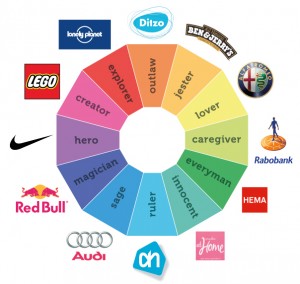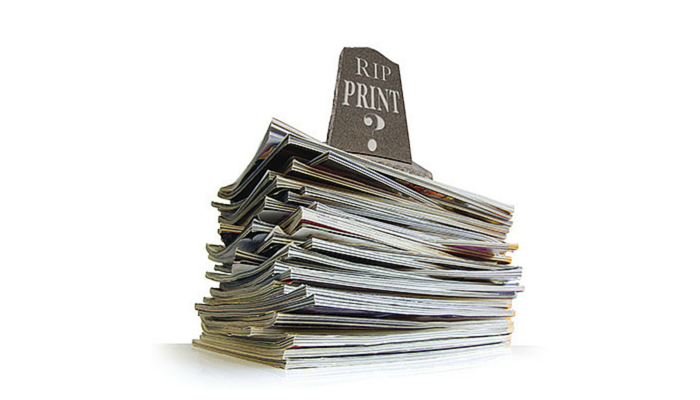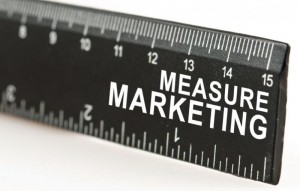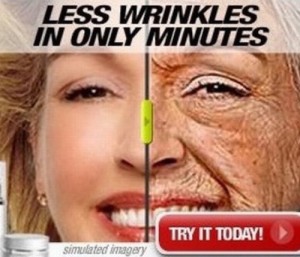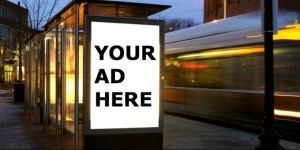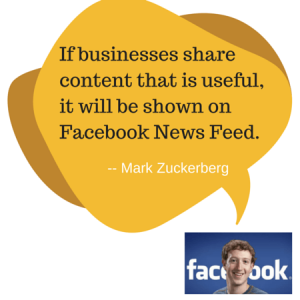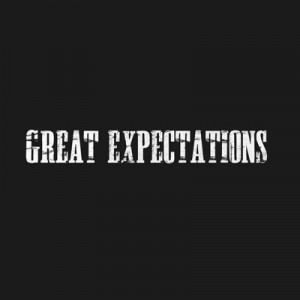Show Us Your True Colors
We’ve seen many a logo pass by our desks here at the Zip Code Magazines, and I have to say some have been great and some… not so much. I’m no graphic designer, but I can tell you one of the biggest factors of a logo that reflects your brand feel is its color. If you’re looking to portray something bold and powerful like a restaurant known for the use of its spices, a soft blue and green logo may not do the trick. Likewise, choosing colors based on how they make consumers feel can add credibility to your brand and truly resonate with your audience…
We found this article that does a great job of explaining how humans react to color, and they may just give you some ideas for your next brand redesign.
Do You Have an Attention Grabbing Ad Headline?
First impressions are everything. That’s why it’s so important to get the largest and most read part of your advertisement dialed in. The headline of your ad should be enough to draw the attention of a reader, whether by making them think, smile, answer or see value…basically making them STOP what they are doing to pay attention to what you have to say in the rest of your ad.
I found this article that gives some good tips on coming up with great headlines. Something I would add? A funny or culturally relevant headline (think of a play on a major TV show if it fits with your customer segment) can also be incredibly effective. Be creative and think about what would make your customer snap to attention and you’re on the right track.
4 Types of Advertising Headlines That Get Attention
by Michele Pariza Wacek
Your headline is the most important part of any print ad. Most people will only read the headline, and the people who choose to read the entire ad will do so based on the headline. Make your ads perform better by using these four types of headlines.
Headlines are the most important part of a print ad.
In fact, David Ogilvy, famous ad man and author of Confessions of an Advertising Man, has said that four out of five people only read headlines. Nothing more.
And if people DO choose to read the rest of the ad, they make that decision based on the headline.
That’s a big job to put on the shoulders for what amounts to a few words.
But before you start despairing over your headline-writing skills, take heart. There are several “headline types” that have proven to sell products and services over and over again. Below are four of the most powerful and the easiest to implement.
1. How to. Everyone loves a how to headline. How To Quit Smoking in 30 Days Or Your Money Back. How to Write a Novel in 30 Days. How to Lose Weight Fast.
Why do these headlines work so well? Because they promise a solution to your customers’ problems. Why else do so many nonfiction books have how to in the title? If the how to is addressing a need, you feel almost compelled to pick the book up and look at it. Or, in the case of marketing materials or articles, this same natural curiosity can entice you to keep reading to discover the answer.
Keep in mind the better the benefit, the more likely you’ll catch your customers’ attention. (The benefits in the above headlines are quitting smoking, writing a novel in a month and losing weight. All of these can be powerful benefits.)
2. Question. These headlines ask a question (obviously). If you want this headline type to work, it better ask a question that your customers want an answer to. Are you spending too much on your car insurance? Will your marriage fail? Will you know what to do if you’re in an accident?
Whatever you do, don’t ask a question that only your business cares about. Something like: Do you know what our company has been up to lately? Again, focus on the benefit for the customer.
3. Top ten reasons. Okay, it doesn’t have to be ten reasons or even the top reasons. But just as everyone loves how to headlines, they also love top ten reasons.
Four headlines that work. Five ways to fix a broken toilet. Seven warning signs that your house may be making you sick.
Again, the customers see the benefits immediately. Plus, they know exactly what they’re getting — so many reasons for something.
4. Testimonial. This headline uses your customers’ words to sell your products or services. This works because people see proof up front that your product or service does what it’s supposed to do. If used correctly (meaning people believe it really is a testimonial from a real customer and not something fabricated) then this can be a very effective strategy.
If you choose this headline, put it in quotes so it’s obvious it’s a testimonial. And use the customers’ words as much as you can to make it sound authentic. Whenever possible, get permission from your customer to use his/her name. You may even want to consider adding a photo as well.
(For more headline and copywriting tips, see Robert Bly’s book The Copywriter’s Handbook.)
Creativity Exercises — Write those headlines
Get a stack of paper, find a couple of pens (I’m partial to gel colored pens) and let’s start brainstorming.
Start by making a list of all the benefits of your product, service or business. (Benefits, not features. Benefits are what your customers will get out of your product.)
Put that sheet of paper aside. Now pick a headline type and write it on top of the paper. For instance, Question headlines. Underneath start writing as many different types of question headlines you can think of. They don’t have to be pretty, they just have to be a question.
Come up with at least 50 of them. Don’t let your brain or pen stop until you do. No matter how painful. If you get stuck, go back and look at your benefits list and pick a different benefit.
I practically guarantee by the time you reach headline number 50, you’ll have written at the very least one pretty darn good headline. You might have even uncovered a brilliant one.
Try this same exercise with all the headline types and see what new ad concepts you uncover.
Fresh Branding Ideas
You know you’re good at what you do, and you think your customers know…but do they know how to talk about you? That’s where your brand comes in. How your company is perceived by others based on your story, the way your brand interacts with customers and more is an extremely important aspect of marketing and sales for any successful business. Those who do it the best have a way of distilling their company’s story into something that resonates and emotionally connects with their perfect customer.
There are so many tools and tricks out there for “branding” that it’s sometimes easy to forget the foundation that makes a good brand so powerful… We found the article below by Liz Papagni that says it all perfectly:
7 Fresh Ideas on How to Brand Your Business
By: Liz Papagni
Brand perception does matter. But what is more important is how you create and position that perception among your customers. Studies have shown that 75% of purchase decisions are based on emotion. The organizations that place value-over-price considerations to win hearts are usually armed with a well-defined, genuinely likeable brand. The benefits of defining your organization’s values, voice, and market placement can include increased profits, and better customer and employee retention. Here are some effective ways to begin defining your organization, or jumpstart your current branding efforts:
1. Be Authentic
A well-branded organization has the ability to be recognized, earn loyalty, and define themselves within their market. However, your efforts to brand your organization won’t get far if they’re not authentic. Don’t try to cast your brand as luxury if you serve price-sensitive customers. Avoid being too “fun” if your ideal customers tend to be more serious. You’ll struggle to deliver the right consistency across platforms if your brand persona is nothing more than a facade.
2. Build From the Inside-Out
Consumers trust their friends and families’ opinions far more than even your owned media assets. That’s why every effort to brand your business should include thought toward building a tribe, who will spread your word organically and with a healthy dose of authenticity.
In Fast Company, Mitch Baranowski recommends starting your branding efforts with the people closest to you, which will most likely be your employees, your existing supporters, and their friends. By building excitement around your message with the people who already know and love your brand, the word will spread much more quickly.
3. Define Your Archetype
While the concept of archetypes may have been defined by famed psychologist Carl Jung, the idea is nearly as old as time. Throughout fables and parables, novels and folklore, there are recognizable types of characters that pop up again and again. This tactic’s been used successfully by more major brands than you probably realize. Microsoft is the boy (or girl) next door, while Apple is the visionary. Taco Bell is a jester, while Volvo is something of a caregiver.
While a basic archetype doesn’t need to control your brand’s entire identity, figuring out where you fit into the classic narrative can significantly streamline your process of creating a compelling brand story.
4. Be Relatable
Virtually everyone knows their company should be relatable, but too few understand what that really means. As author Lewis Howes points out, the heart of the issue here is really empathy. The world’s most relatable brands have made it their mission to understand their customers problems, and focus on being the de facto solution. That’s why Nike represents athletic triumph, and Geico represents price-sensitivity. Know your buyer personas, and be their solution.
5. Market to Your Customers
If your current content marketing strategy doesn’t include outreach efforts for your existing customers, you’re losing fabulous potential. Remind your clients who you are, and how you fit into their unique lifestyle, in order to remain both top-of-mind and avoid being forgettable. Strategist Daniel Tay highlights the fact that truly epic brands aren’t built overnight, but more usually over decades with the help of consistent efforts.
6. Be Honest About What You Don’t Do Well
Regardless of what makes your brand unique, your values need to include authenticity, which is enhanced by honesty. Know what your company doesn’t do well, and focus on enhancing your strengths, instead. Successful beauty entrepreneur Ido Leffler says this very tactic is among their biggest successes to date, and it doesn’t end with focusing their marketing communications on their strengths. “When things go bad you have to be honest about the reality and do everything humanly possible to fix it.”
7. Give Back
Even if your organization doesn’t have a non-profit or humanitarian bent, engaging your community in positive and altruistic ways can be an incredible branding action. Whether you choose to donate a portion of your profits or sponsor employee-led volunteer outreach, it’s more than just good PR. Community service can enhance your customer’s perception of your brand, and improve your ability to leverage your employees as brand ambassadors. Studies by RealizedWorth have found that corporate social responsibility programs improve employee engagement and loyalty.
Looking to build your brand through advertising? Call us at (702) 877-9477 and we’ll show you how!
Print’s Not Dead
I’ll admit it. If you haven’t figured it out already this specific post is a little self serving, but this nasty little rumor has been going around for the last few years and I can’t shake the fact that, despite all the hype about print being “dead,” there is still plenty of new and valid research that says otherwise. Just last year, GfK Panel Services (a research company specializing in ROI studies) showed that print advertising had the highest ROI of any advertising medium. Another study from Pitney Bowes in 2014 showed 76% of small business still saying their ideal marketing mix includes both print and digital.
Yea, yea. Of course I’d say that. So I went searching for a second opinion. I found this article that I think does a nice job of summing up the pros AND cons of print media, but ultimately comes to the conclusion that including print in your marketing mix is a wise choice… Hope you enjoy.
Is Print Advertising Still Worth It by Genesis Davies | Yahoo Small Business
Effective Marketing Measurement
There’s a key word in the title of this blog… Effective. If you are interested in truly knowing your ROI on marketing and advertising — what’s working and what’s not — that word should stand out big time. I’ve had many conversations with business owners who are checking off the Measurement box and doing all the “right” things when it comes to evaluating marketing decisions, but the questions they are asking aren’t necessarily the most effective when it comes to truly deducing what marketing is working for their business.
I came across this article that lays out a scenario I’ve seen many times. Much of the issue stems from basic consumer behavioral changes that, if not considered, could lead to assumptions about your marketing mix that aren’t true….
A Good Marketing Strategy Begins With Effective Advertising Measurement
Interested in advertising with the Zip Code Magazines?
Drop us a line at (702) 877-9477 or fill out our advertiser form for more info!
Back to the Basics
Sometimes it’s good to go back to the basics. For the Zip Code Magazines and our customers, that means taking a look at the tried and true ways to achieve the highest ROI and the biggest bang for an advertising dollar. As many of you have heard us say, “Advertising stays where it pays.” That couldn’t be more true, but there are definitely ways to make sure the “pays” part is as big as possible. From understanding messaging and calls to action, to really dialing in your methods for effective measurement (That’s not just asking random customers where they heard about you!), going back to the basics is a great way to cut through the gnarly forest of modern day advertising options to ensure the foundation of your brand is strong.
We found a great article from advertising expert Dean Parker to help focus us on the basics of effective advertising. Hope you enjoy!
Get the most bang for your advertising buck by following these eight tips
By: Dean Parker
- Reach your target market.
To ensure your advertising campaign is effective, you need to speak with the right people. Start by reviewing the demographics of your current client base. If you are already successful in one geographic region, age group or industry, then look at maximising the exposure to other potential customers in that same group. Find out which publications or websites target these people and look at advertising there. - You need more than one advertisement.
An advertising strategy is a plan that you commit to for the long term. Advertising results are not always instant.It is best to advertise in the same medium repetitively, rather than placing ad hoc advertisements here, there and everywhere. It generally takes three exposures to your same advertisement before a potential client will respond.
By advertising on a regular basis, it shows that you are committed to finding new clients, and the next time you advertise, they may be in a position to respond.
- Have a call to action
To gain instant results from your advertising campaign, include a discount or special offer. An expiry date help motivate customers to act straight away. No expiry date means people soon forget about the offer and may not purchase. - Negotiate for editorial coverage.
If you commit to regular advertisements with a publication, ask for editorial coverage. A third person editorial provides your product or service with credibility. Your editorial should be written to look like a regular article. It must be newsworthy and include some professional tips, news or trends that re-enforce the message of your advertisement. The aim is to build your reputation as an expert in your industry. When a customer needs your product or service or has a problem, you’re the first person they think of. - Make it professional.
When designing your advertisement, seek professional advice. Many publications have a graphic design department that will be able to assist you. Ensure that any logos or photos you are using are of the right resolution. Include all relevant contact details in the advertisement, such as your web address and phone number. - Check and double check.
It is your responsibility to ensure the details in your advertisement are right. Ensure that phone numbers, web addresses, dates, prices and details are correct. Have someone else in your business proof-read the ad. - Be prepared!
Hopefully your campaign is a success and you are rushed off your feet with new enquiries. Before the advertisement goes to print, ensure that any products or services advertised are in stock and available. - Measure the outcomes.
Question every new client on where they heard about you. This will enable you to work out which advertising campaigns have worked and which haven’t. This is valuable information that helps you set an effective advertising strategy for the following year. This information also helps you accurately allocate future advertising budgets for maximum return.
Now that your advertising strategy is in place, get ready for the phone to ring.
Speaking to Boomers… (and, pretty much every other generation)
I saw this article recently in MediaPost and the headline caught my eye: “Ever Wonder Why Baby Boomers Don’t Respond To Your Advertising?” Relevant, as connecting with this large and powerful generation (Consumers over 50 years of age represent 44% of the U.S. population, control 70% of disposable income, and account for 49% of all spending on consumer packaged goods according to Nielsen.) is most certainly in the best interest of business. And definitely an issue I’ve thought about and discussed with customers frequently in my line of work.
What I’m wondering, however, after reading the entire article is whether these are good tips for advertising to any generation. It’s a fact that “Millenials” also react well to authenticity… as a Gen X, I can safely say I do as well, in addition to my peers. Really, who doesn’t want to be talked to in an original, non-condescending way about something that will actually make our lives better, easier or more fulfilling? The larger issue may be that this demographic is being ignored all together, and that’s why your ads may not be resonating with them. My advice? (Since I’ve got you here already.) Know thy customer and talk to them like you’d talk to a friend in person. If you are selling a product, service or experience that Boomers want, make sure your advertising reflects that respectfully, and without all that cliche jargon and generalities that make everyone cringe.
Read this article for some good tips for your next ad: “Ever Wonder Why Baby Boomers Don’t Respond To Your Advertising?”
I’m confident you’ll begin to see a response.
See you around the neighborhood,
Greg
Blog: Build an Effective Advertisement – Get the Most Out of Your Design
It’s a new year, and that means taking inventory on what you’re doing right, and what you may be able to improve on. This can include cutting a few desserts during the week, spending more time away from your computer or, more tactically, figuring out better and more effective ways to get the most out of how you are marketing your business (*cough* advertising *cough*).
When you have a lot to say and short time to say it, you’ve got to be able to prioritize how and why you’re telling your story. This is no different from an advertisement. For many of you traditional advertising, like in magazines, is the portion of your marketing mix that reinforces your brand as well as brings in current and new customers with deals and calls to action. This month, I challenge you to take a look at the ads you have running and ask yourself a couple of questions:
- Is your brand name, logo and contact information obvious and easy to find?
- Is your Call-to-Action clear?
- Does your ad look appealing to the type of customer you are seeking to capture?
- What can you do to make your ad even better than it already is?
If found this article that has some great tips and tactics for getting the most out of your advertisement. I hope it helps as you work to make 2015 your best year yet.
Facebook Troubles? Tips for writing better online content.
For what seems like the hundredth time, Facebook is again changing its algorithm for showing posts in our Newsfeeds. This time, it’s given direct instructions on what kinds of posts will be shown, and what kind will be…well…completely nixed.
While we know social media is just a supplement to other marketing, we also know it’s a powerful one that helps you connect with your customers on a more personal level, that’s why we’re passing along this article from Jay Baer, the author of best seller Youtility on how to make the most of your social media pages with thoughtful, helpful and non-promotional content.
P.S. This works in your advertisements as well. Everybody loves good content. 🙂
Enjoy…
Great Expectations: A Fine Line in Business Branding
In this Yelp-driven world where reviews can spread like wildfire and have incredible impact on your business, customer perception is paramount… every time. This isn’t to say customer satisfaction hasn’t always been the highest priority, but if we’re considering the information-age and the abundant resources for one disgruntled patron to voice disconcert, I’m just saying our margin for error as a business (and as business-owners and employees) has gone down dramatically.
Something I’ve noticed with my clients through the years that makes the threat of error even greater is their tendency to set expectations too high. As a brand (and we’re all brands), creating larger-than-life expectations with your clients can almost immediately set you up for a failure that’s hard to come back from if you hit an issue that, while certainly not the norm, blindsides the client without so much as a tap on the shoulder. As I’m always looking for other resources that can help my customers find success, I stumbled across the article below that explains this kind of incident perfectly as well as giving some great advice as how to avoid the “Great Expectations” trap, and keep your brand’s reputation spotless without having to be perfect…every time.
Enjoy.
Great Expectations Can Be a Drag…On Your Brand






